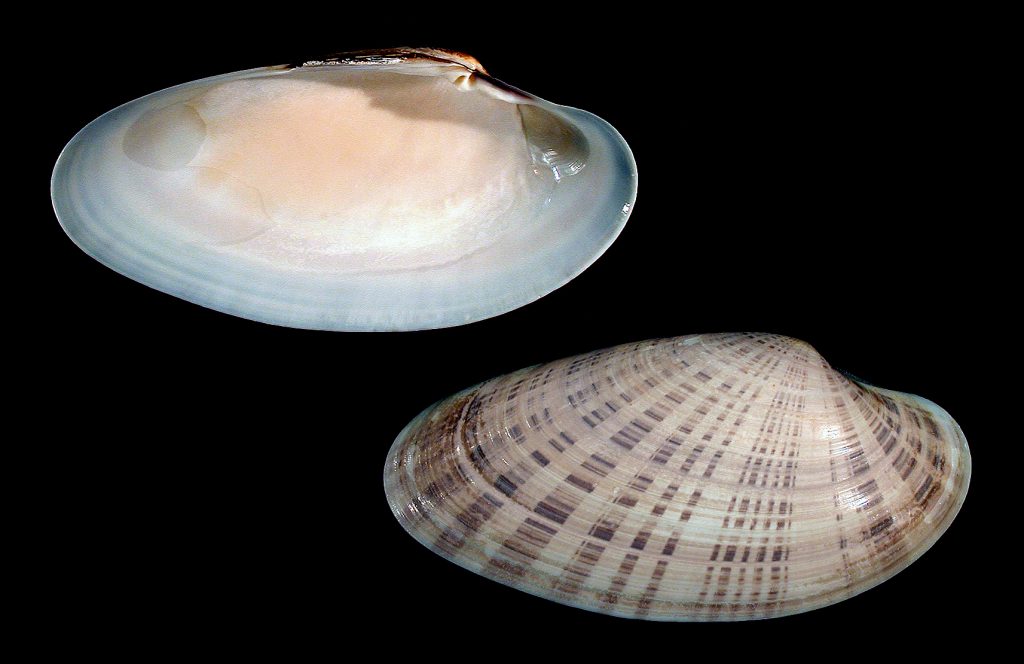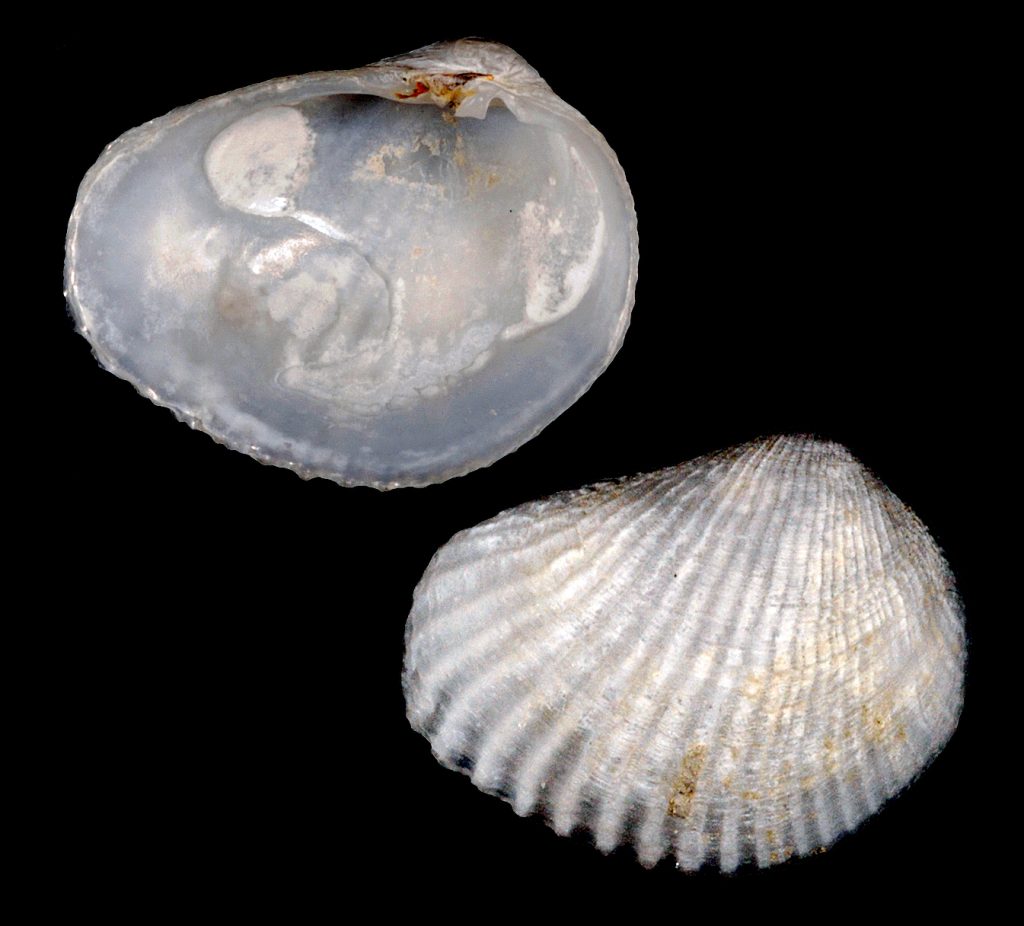Shell size to 35 mm; shell very thick, solid, with 5-9 concentric ribs rounded or slightly flattened in cross-section. Shell triangular, with postero-dorsal margin straight. Color cream, with rose or light-brown mottlings. Species lives in deeper water in the Gulf of Mexico and in shallower areas in the Gulf and the Caribbean; it is very rare on the beaches of SW Florida. The left valve illustrated was found by Kimberly Nealon on Captiva, on Easter Sunday, April 20, 2014; its presence on the beach most likely resulted from the late-2013 beach renourishment project. The picture on the bottom is an inverted image of the same left valve as in the other view. This is Lirophora latilirata (Conrad, 1841) of other authors. This latter taxon, however, is strictly a Miocene fossil species.
Read More










